This page is not compatible with Internet Explorer.
For security reasons, we recommend that you use an up-to-date browser, such as Microsoft Edge, Google Chrome, Safari, or Mozilla Firefox.
Battery Inspection and Development
Using Industrial Computed Tomography
Battery Inspection and Development
One of the most expensive and safety-critical components in cars and other electrified vehicles (EV) is the battery. It has the highest influence on the vehicle range, and poor quality may lead to rapid degradation. Currently, lithium-ion batteries (LIBs) are the most common on the market. Due to their high cost share of the entire vehicle and the fact that LIBs are also highly safety critical, their integrity must be guaranteed with maximum reliability using the latest battery inspection technologies.
Consumer electronics require batteries with even higher energy densities. Incidents in the recent past have shown that the safety of these devices must be guaranteed, as well—especially if they are carried on the human body or in hand luggage on public transportation.
Besides the production of established designs, batteries are also a hot topic in research. Challenges in R&D span from battery design to microstructure characterization of the components. Scientists aim to optimize anode and cathode material of LIBs, as well as explore new concepts like solid-state batteries—where a fixed internal design has not yet been established.

Figure 1: Prismatic EV cell (data courtesy of Waygate Technologies)

Figure 2: Smartphone battery (data courtesy of Volume Graphics / PP)
The Challenge
From a manufacturing point of view, batteries must be inspected to avoid a variety of flaws for maximum safety. For example, the battery housing of LIBs must be perfectly sealed, as the electrolyte produces highly toxic hydrofluoric acid upon contact with water, which is harmful to humans and the environment. Metallic contaminations, which can occur during the welding process of the housing, can cause a short circuit and lead to a thermal runaway. While delamination, variation in cathode or anode thickness, and anode overlap are all internal flaws that may not initially lead to a catastrophic failure, they can reduce the capacity and the lifetime of the battery.
The optimization of high-performance batteries with even higher capacity and power in EVs or consumer electronics is an ongoing process. Smaller advances can be achieved by improving manufacturing processes and cell geometries. For larger steps, however, completely new materials have to be developed, which inherently present their own sets of challenges, such as the large change in volume of silicon anodes during loading cycles and the resulting mechanical stresses.
The Volume Graphics Solution: Computed Tomography (CT) Provides a Holistic Approach, from Battery R&D and Serial Production to Quality Checks for the Second-Life Market
Traditionally, batteries are inspected electrically with respect to their capacity and resistance. Mechanical flaws often remain undiscovered because it is not possible to look inside the sealed housing with conventional methods. Battery inspection using computed tomography (CT), however, enables you to look inside the assembled battery, and Volume Graphics software provides the right tools to utilize this data for final quality checks to dispel any lingering doubts about the integrity of the battery.
The software VGSTUDIO MAX enables customers to inspect batteries in a variety of scenarios, whether they were produced in-house, provided by a supplier, or even already installed in their intended component. CT enables you to look inside the battery and uncover defects before they affect the safety or reliability of the component.
In R&D, the predominant 3D imaging technique for characterizing battery-active material is focussed ion beam milling combined with scanning electron microscopy (FIB-SEM). Recent advances in CT technology can reach resolutions of up to 30 nm voxel size, which makes it a reasonable alternative to classic micro computed tomography and FIB-SEM. Independent of the image source, VGSTUDIO MAX provides tools for microstructure characterization to derive statistics about, for example particle size or tortuosity of the porous space for battery modeling. Moreover, three-dimensional displacements over time can be quantified through digital volume correlation, which compares multiple scans, for example during cycling or before and after the formation process.
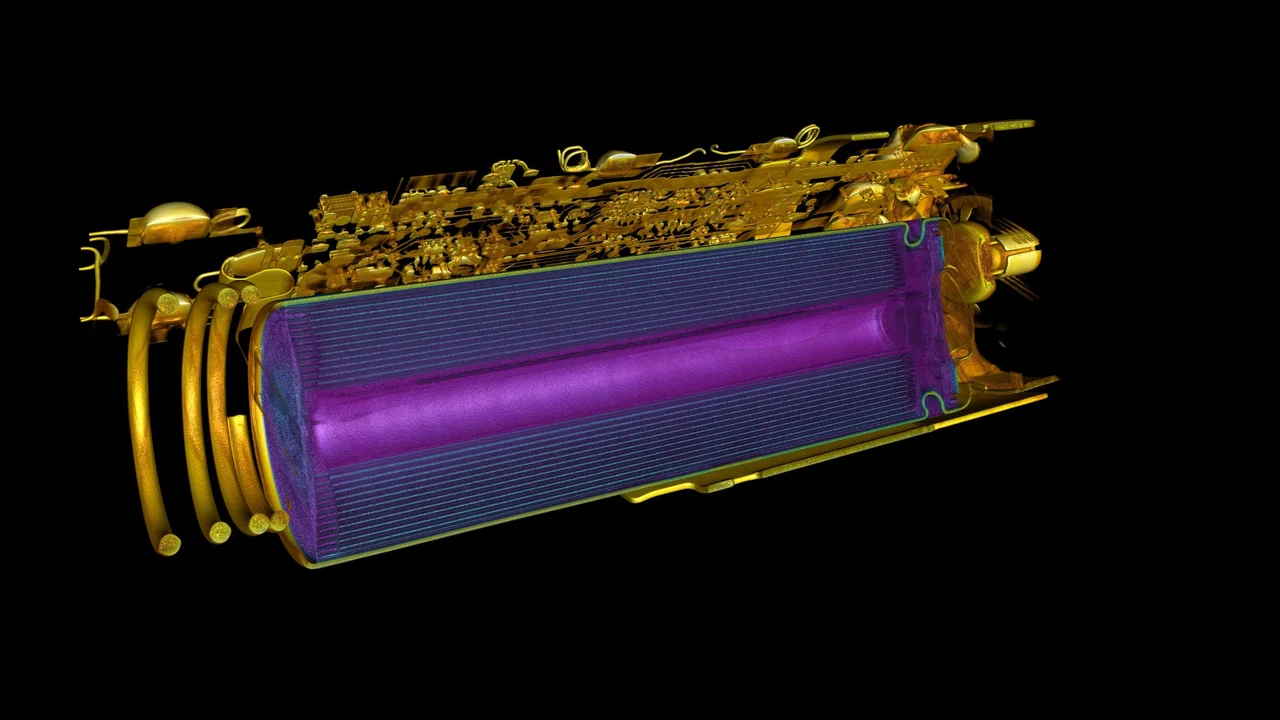
Figure 3a: Battery inspection of an electric toothbrush. Only the area with the battery and electronics board was scanned to improve the resolution.

Figure 3b: Battery inspection of an electric toothbrush. Battery and the electronics board inside the housing.
Advantages
Volume Graphics enables you to comprehensively inspect batteries in development and quality assurance using industrial CT:
Non-Destructive
- Investigate hidden inner defects in sealed batteries without physically opening them
- Check entire components with fixed batteries or battery modules that include multiple cells
Instructive
- Powerful 3D and 2D visualization: Simply switch between different views and slices for visual inspections
- Ready-to-use analyses for specific tasks, e.g., pore or inclusion detection, no programming required
- Full “digital twin” of the individual component, allowing for inspection even after delivery (for example if a customer files a quality complaint)
Automated
- Seamless transition from manual and semi-automated analyses in the lab to fully automated quality assurance in production, including optional manual operator reviews
The Volume Graphics Solution in Detail
Battery Manufacturing
In order to demonstrate what can go wrong in the production of battery cells, we intentionally produced batteries with defects and used industrial CT and Volume Graphics software to detect a variety of flaws. The CT data was provided by Waygate Technologies.
Metallic Particles
The cap of prismatic cells is usually welded to the rest of the housing. Poorly chosen welding parameters can cause small metallic particles to drop inside the battery and damage the separator within the jelly roll. The inclusion analysis in VGSTUDIO MAX enables you to detect these particles and quantify their size and position in order to decide whether a particle is critical or not.
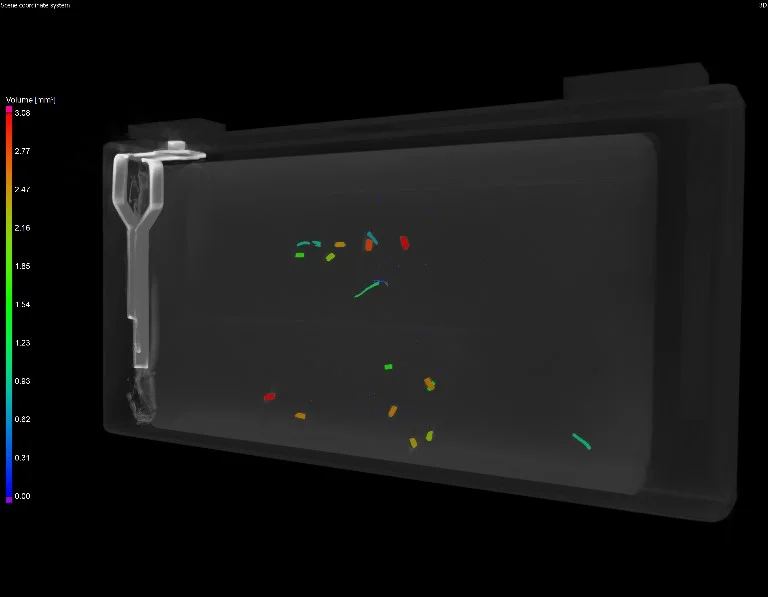
Figure 4: Prismatic cell with metallic inclusions (data courtesy of Waygate Technologies)
Anode Overlap
The anode overlap is an important safety criterion in LIBs. If it is too small, there’s a danger of lithium plating—a pure metallic precipitation of lithium—which can damage the separator and lead to a short-circuit and, in worst cases, a thermal runaway. CT investigations allow you to check for sufficient overlap, even if the battery is already sealed or installed in an electric device.
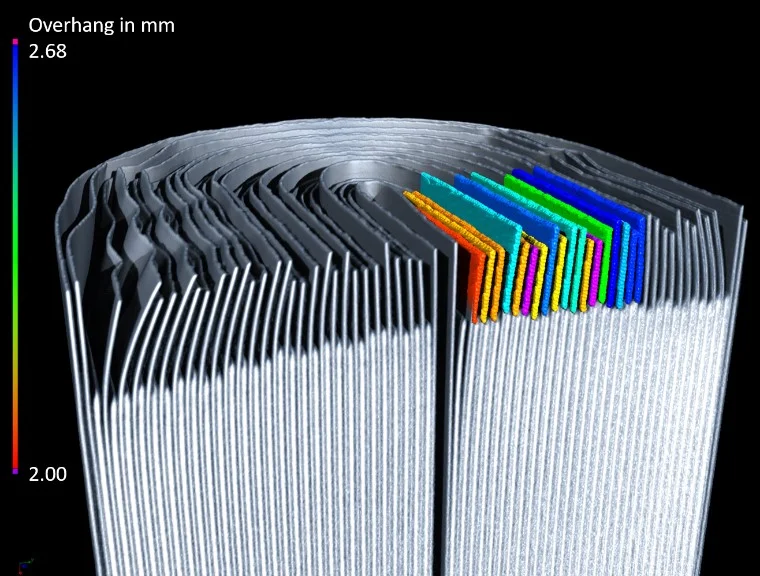
Figure 5: The anode overlap is a safety-critical feature of LIBs, which can be measured via computed tomography. This image is a color-coded visualization of the analysis results. .
Delamination
Although delamination does not initially lead to a critical failure, it reduces the capacity and lifetime of the cell. It can also provoke lithium plating, which can damage the separator and lead to a safety-critical failure of the battery. Volume Graphics software is able to visualize delamination not only during manufacturing, but also in later maintenance if the delamination arises after multiple charging cycles.

Figure 6a: Investigating the gray values perpendicularly to the plies enables the detection of delaminations by larger plateaus with low gray values.
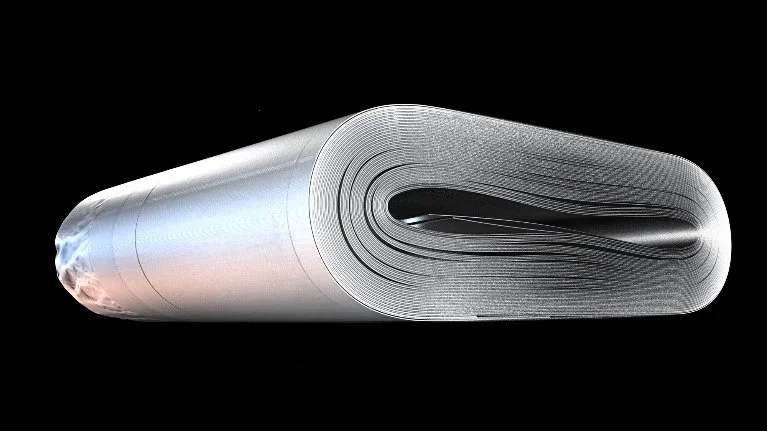
Figure 6b: Jelly roll, consisting of coiled anode, cathode, and separator. The dark gaps between the plies are delaminations.
R&D
Optimization
The characterization of anode and cathode material is ongoing research. Using the powder analysis in VGSTUDIO MAX, you can characterize the size and shape of each individual particle of the active material and quantify them in global statistics. Moreover, the size distribution can be investigated in a certain direction to see variations in the particle diameter or shape over the thickness of the coating.
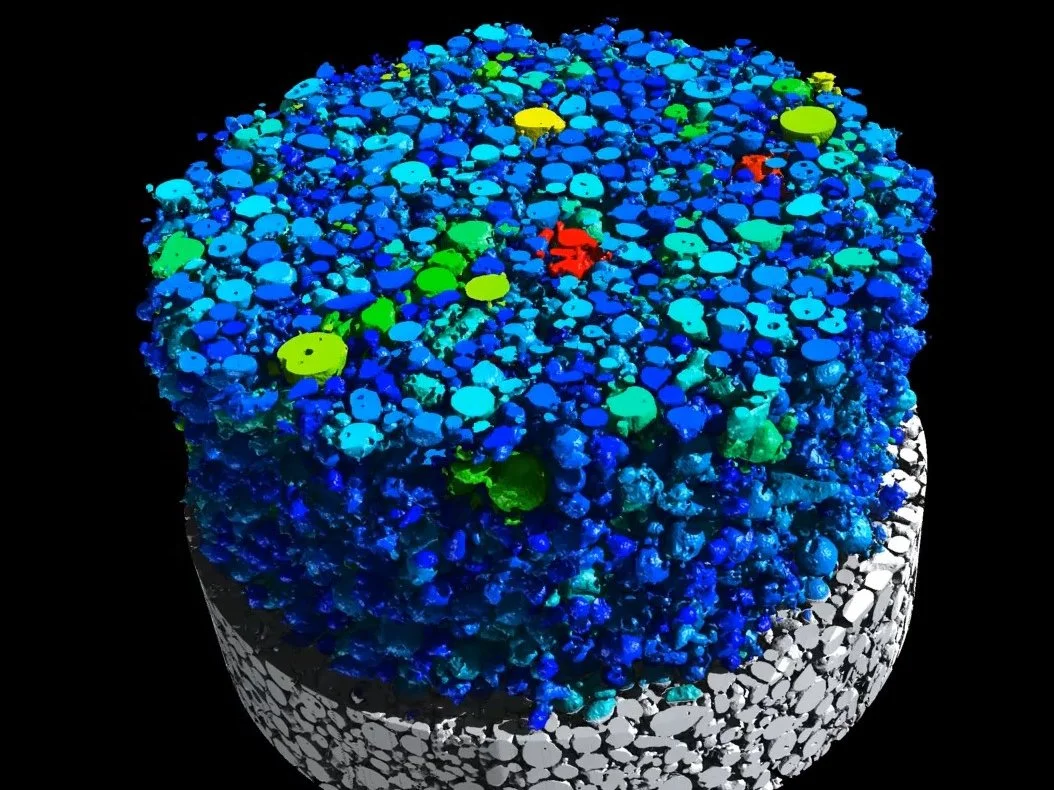
Figure 7: Particles within the active material of batteries can be separated and color coded with respect to the grain size.
New Battery Concepts
New battery concepts like solid-state batteries may require an entirely new microstructure design. As a fixed design has not yet been established, the analysis methods must be flexible as well. A recent example are open ceramic foams, which are manufactured using a replica method where a polymer foam is coated with ceramic powder. The polymer burns during the sintering process, leaving hollow struts in the structure. With VGSTUDIO MAX, you can characterize the cells of open foam and the hollow channels within the struts separately and quantify them in an easy-to-use workflow.
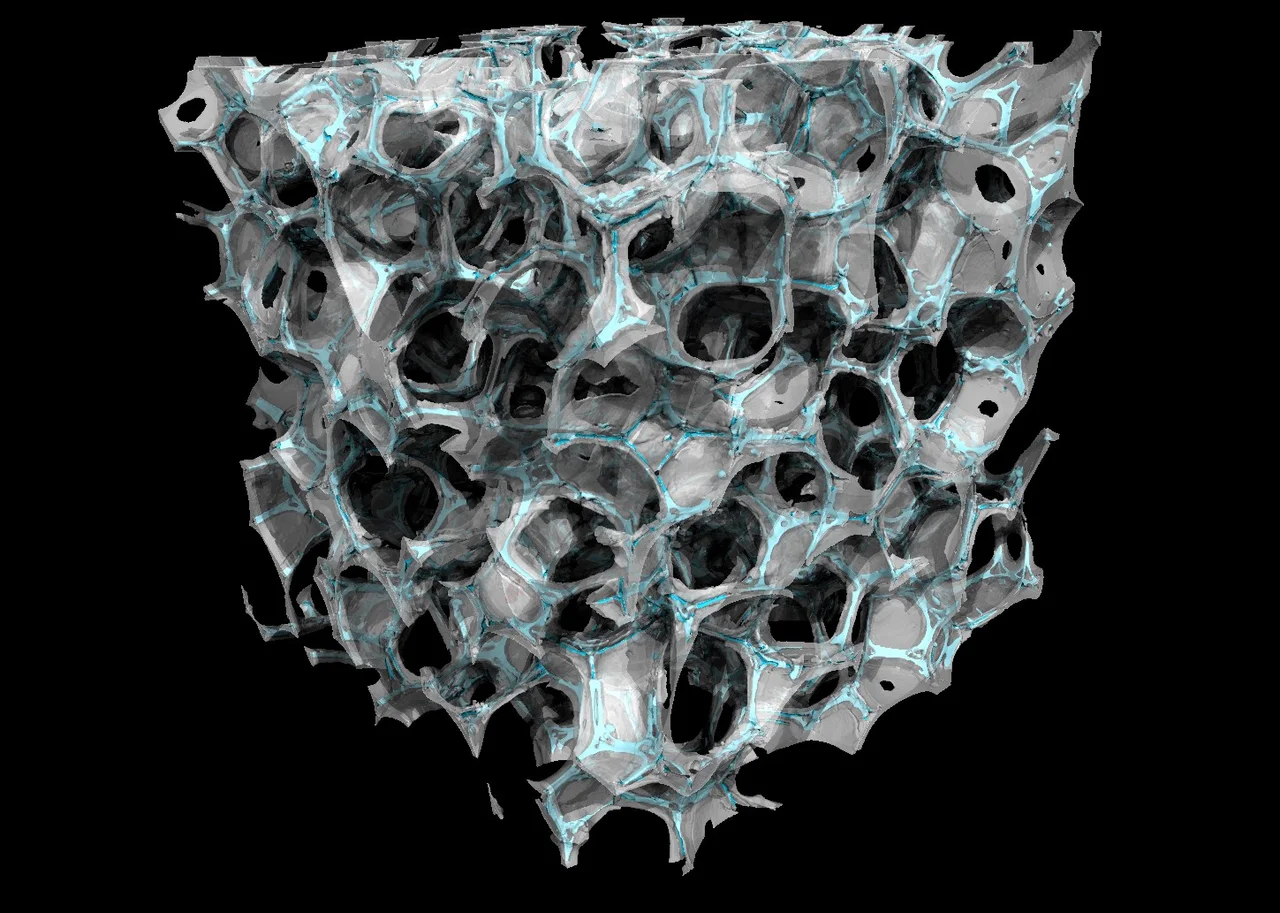
Figure 8: Ceramic foams are potential candidates for electrolyte material in future solid-state batteries. Due to the replica manufacturing process, there are thin channels within the struts (blue).